Abstract
Visually evoked cortical potentials were studied in six patients with a homonymous and six with a bitemporal hemianopia by presenting a pattern-reversal stimulus separately to a temporal or nasal retinal area and by recording the responses from leads over the hemispheres. Homonymous visual field defects are characterized by a reduction of VECPs from the affected hemisphere. The disturbance of VECPs in bitemporal hemianopia is more serious, since the fibres from both retinal halves may be damaged by a chiasm tumour.
Full text
PDF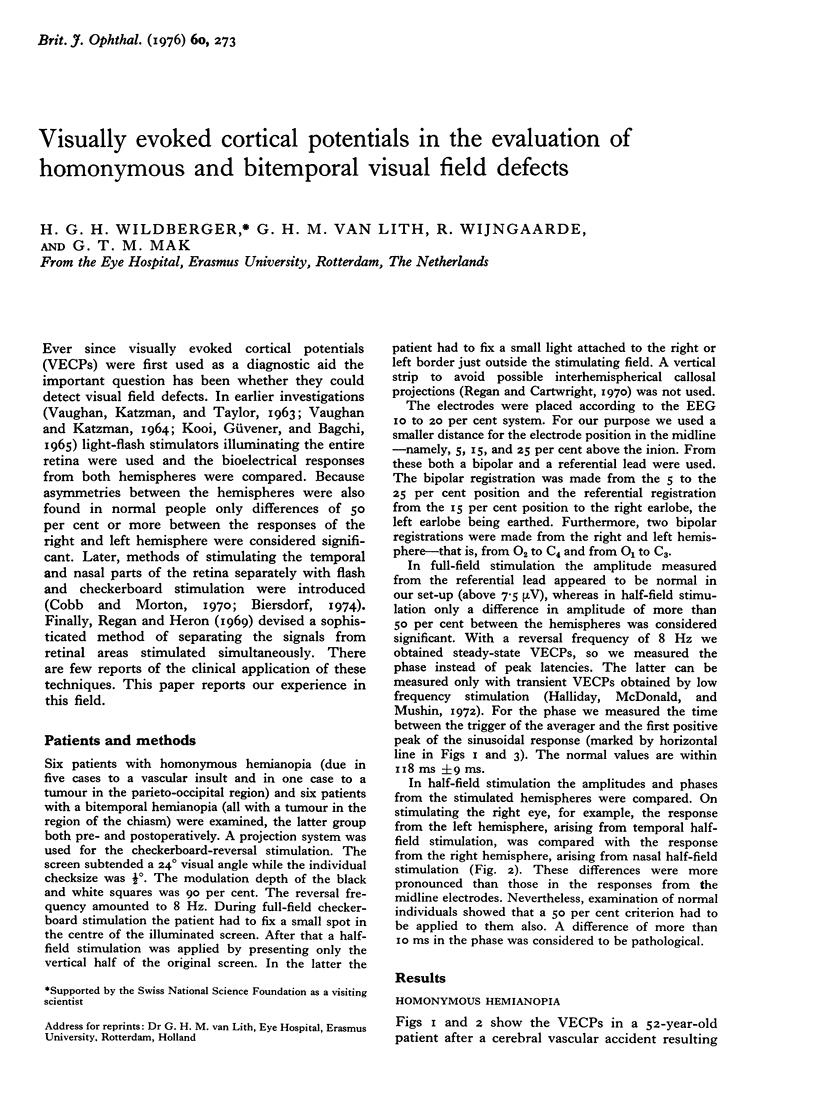
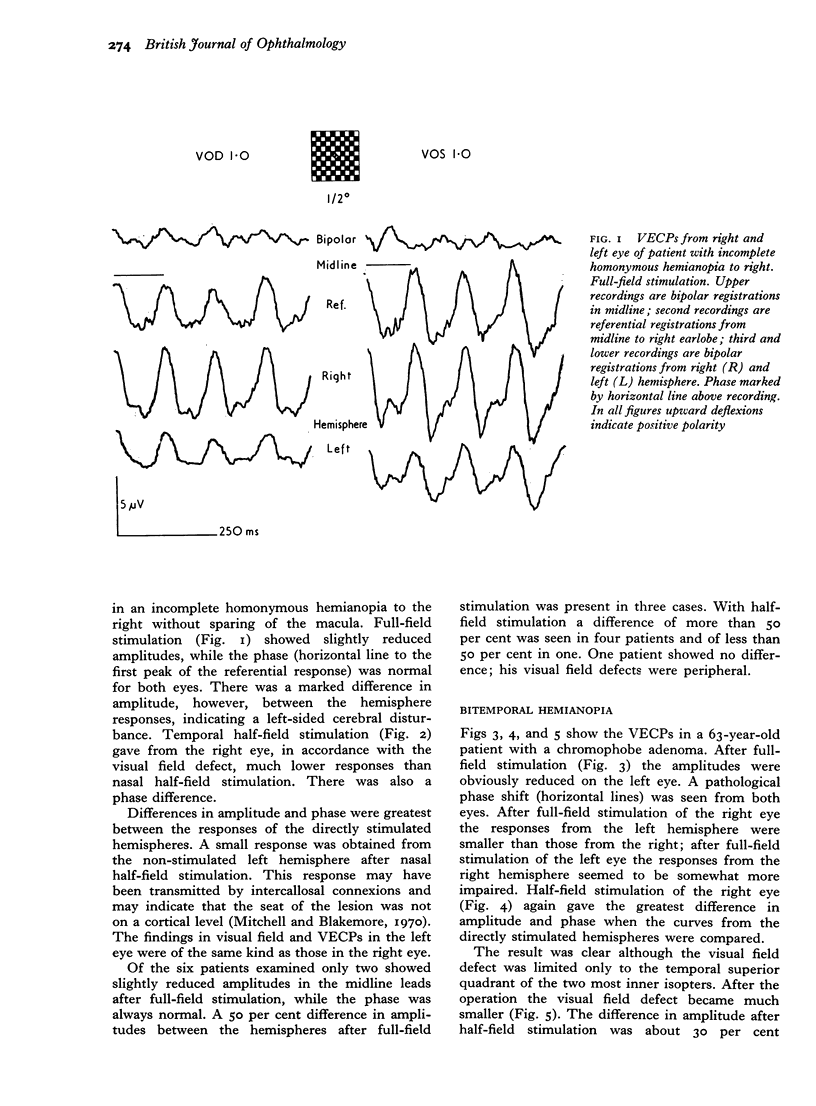
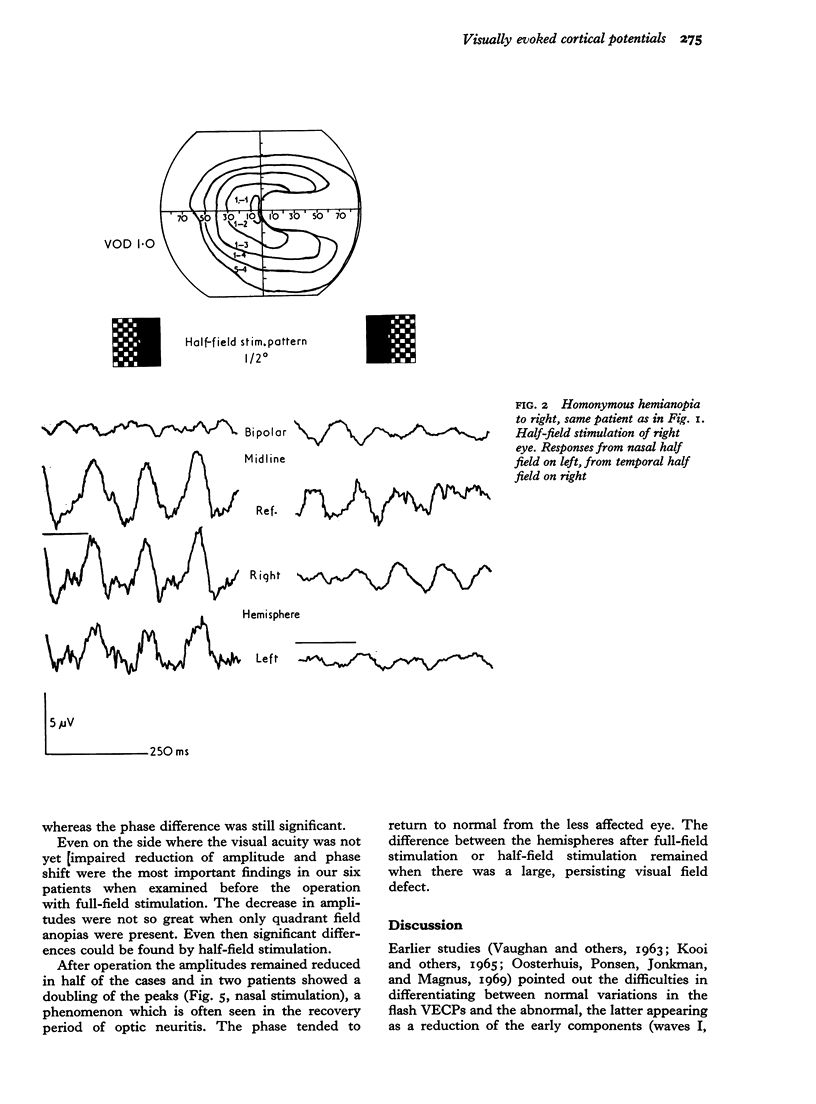
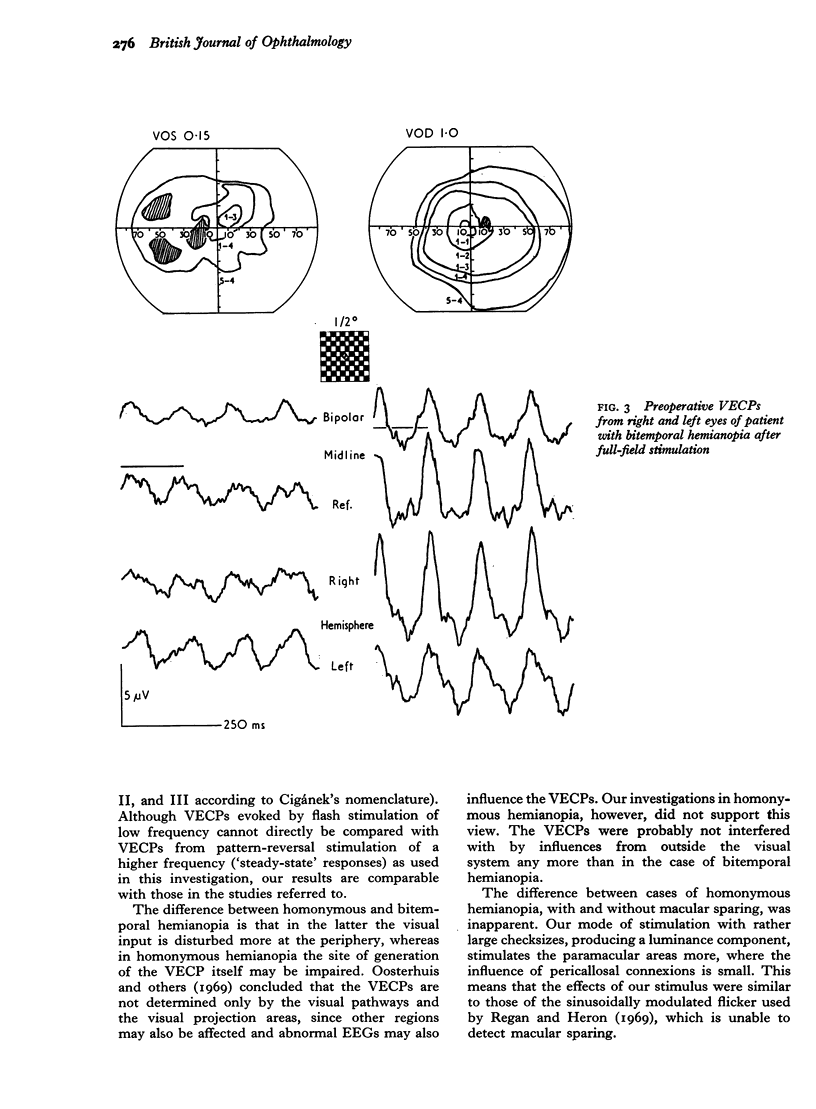
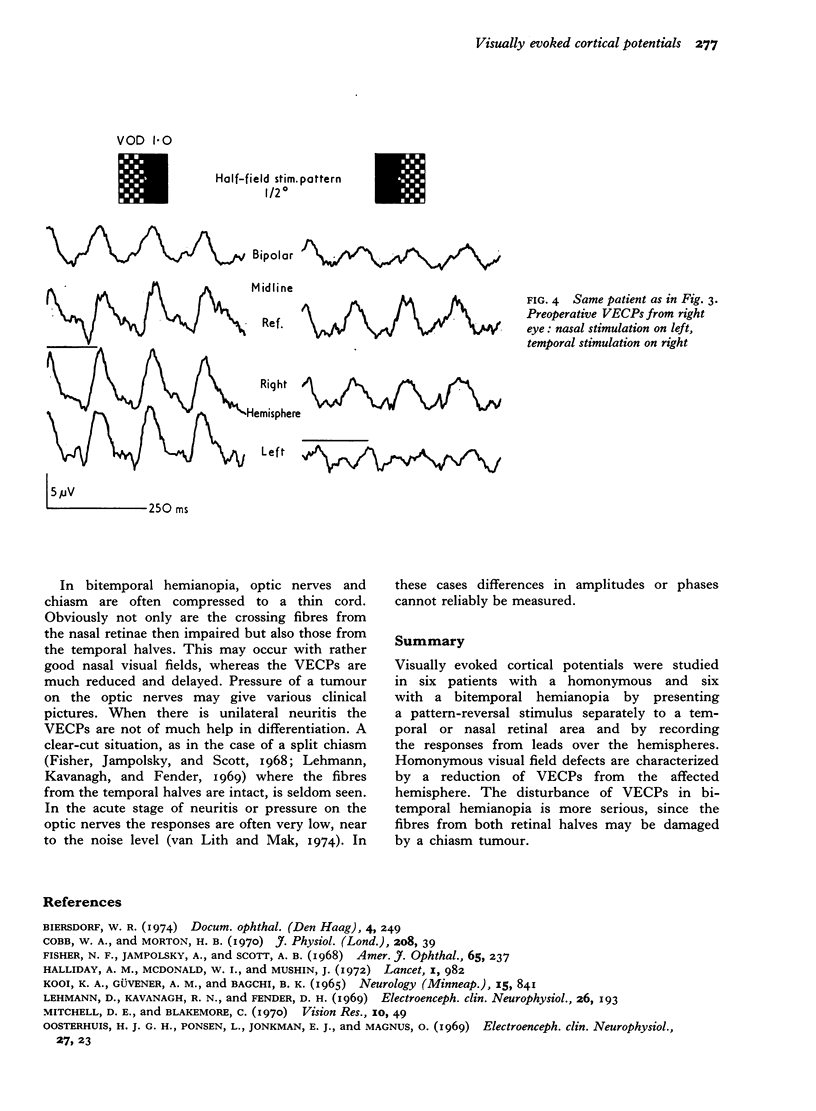

Selected References
These references are in PubMed. This may not be the complete list of references from this article.
- Fisher N. F., Jampolsky A., Scott A. B. Traumatic bitemporal hemianopsia. I. Diagnosis of macular splitting. Am J Ophthalmol. 1968 Feb;65(2):237–242. doi: 10.1016/0002-9394(68)93594-0. [DOI] [PubMed] [Google Scholar]
- Halliday A. M., McDonald W. I., Mushin J. Delayed visual evoked response in optic neuritis. Lancet. 1972 May 6;1(7758):982–985. doi: 10.1016/s0140-6736(72)91155-5. [DOI] [PubMed] [Google Scholar]
- KOOI K. A., GUEVENER A. M., BAGCHI B. K. VISUAL EVOKED RESPONSES IN LESIONS OF THE HIGHER OPTIC PATHWAYS. Neurology. 1965 Sep;15:841–854. doi: 10.1212/wnl.15.9.841. [DOI] [PubMed] [Google Scholar]
- Lehmann D., Kavanagh R. N., Fender D. H. Field studies of averaged visually evoked EEG potentials in a patient with a split chiasm. Electroencephalogr Clin Neurophysiol. 1969 Feb;26(2):193–199. doi: 10.1016/0013-4694(69)90210-7. [DOI] [PubMed] [Google Scholar]
- Mitchell D. E., Blakemore C. Binocular depth perception and the corpus callosum. Vision Res. 1970 Jan;10(1):49–54. doi: 10.1016/0042-6989(70)90061-1. [DOI] [PubMed] [Google Scholar]
- Oosterhuis H. J., Ponsen L., Jonkman E. J., Magnus O. The average visual response in patients with cerebrovascular disease. Electroencephalogr Clin Neurophysiol. 1969 Jul;27(1):23–34. doi: 10.1016/0013-4694(69)90105-9. [DOI] [PubMed] [Google Scholar]
- Regan D., Heron J. R. Clinical investigation of lesions of the visual pathway: a new objective technique. J Neurol Neurosurg Psychiatry. 1969 Oct;32(5):479–483. doi: 10.1136/jnnp.32.5.479. [DOI] [PMC free article] [PubMed] [Google Scholar]
- VAUGHAN H. G., Jr, KATZMAN R. EVOKED RESPONSE IN VISUAL DISORDERS. Ann N Y Acad Sci. 1964 May 8;112:305–319. doi: 10.1111/j.1749-6632.1964.tb26759.x. [DOI] [PubMed] [Google Scholar]


